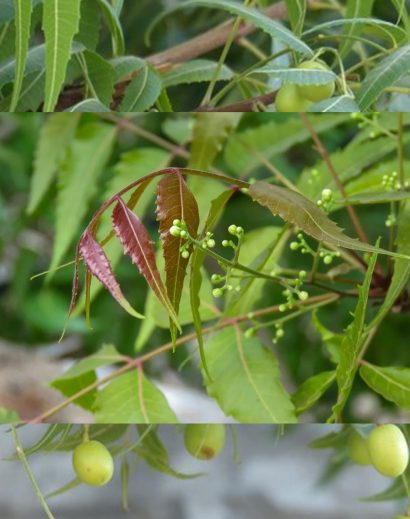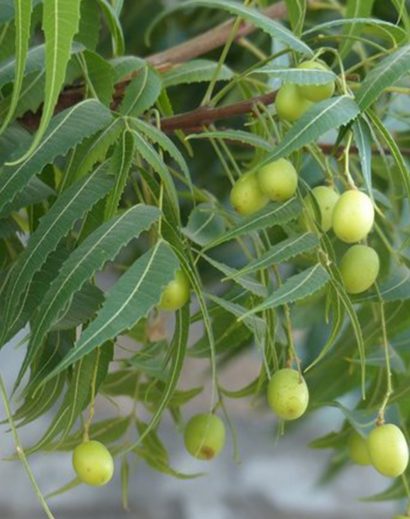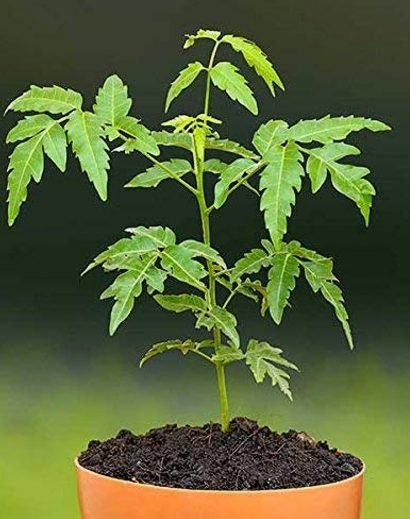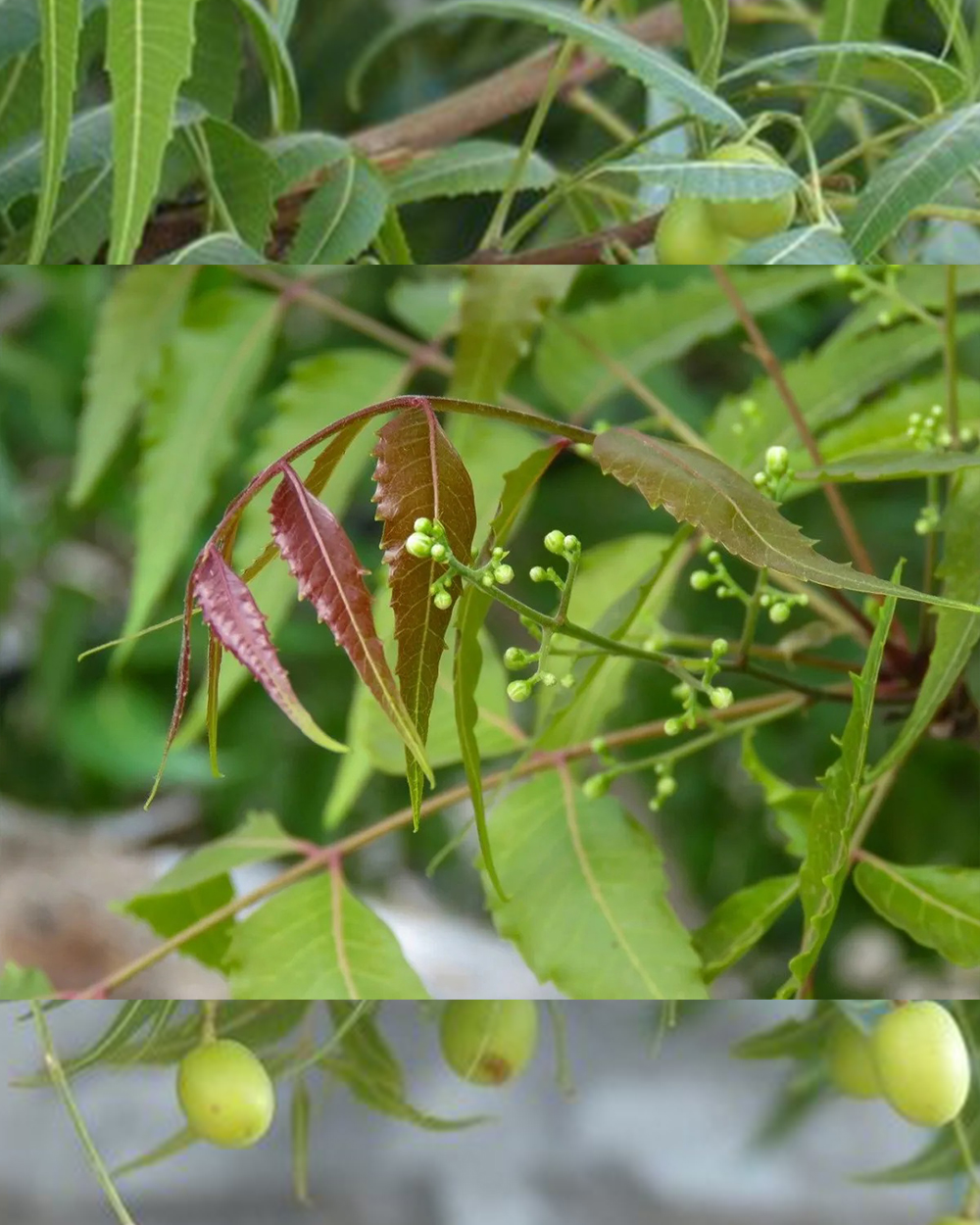The neem tree (Azadirachta indica) is a versatile and evergreen tree native to the Indian subcontinent, although it has been cultivated and is now found in many tropical and subtropical regions around the world. Neem is known for its numerous practical uses, particularly in traditional medicine, agriculture, and pest control. Here’s a description of the neem tree:
- Physical Appearance:
- Leaves: Neem leaves are pinnate (feather-like) and typically have 10-31 leaflets, which are lance-shaped with serrated edges. They are dark green and glossy.
- Flowers: Neem trees produce small, white to off-white, fragrant flowers in clusters. These flowers are typically small and delicate.
- Fruits: The fruit of the neem tree is a drupe that resembles an olive. It is green when young and turns yellow when ripe.
- Bark: The bark of the neem tree is rough and brownish-gray.
- Height: Neem trees can vary in size, but they generally grow to be about 15-20 meters (50-65 feet) tall, although they can sometimes reach up to 30 meters (100 feet) in height.
- Botanical Features:
- Neem is part of the Meliaceae family, which includes mahogany trees.
- The tree has a dense, rounded crown with a spreading canopy.
- Neem is an evergreen tree, which means it retains its leaves throughout the year.
- Uses:
- Medicinal: Neem has been used in traditional medicine for centuries and is believed to have various health benefits. It is used for its antibacterial, antifungal, antiviral, and anti-inflammatory properties.
- Agriculture: Neem is a valuable tree in agriculture for its natural pesticide properties. Neem oil, neem cake, and neem-based insecticides are used to control pests and improve soil health.
- Personal Care: Neem is also used in cosmetics and personal care products like soaps, shampoos, and creams due to its skin-friendly and antimicrobial properties.
- Ornamental: Neem trees are sometimes planted for their ornamental value in gardens and along streets.
- Cultural and Traditional Significance:
- Neem holds cultural and religious significance in many parts of India and South Asia.
- It is often referred to as the “village pharmacy” due to its wide range of uses in traditional medicine.
- Environmental Benefits:
- Neem trees are drought-resistant and can thrive in arid conditions, making them important for afforestation and reforestation efforts in regions with water scarcity.
- The tree’s ability to improve soil fertility and its role in preventing soil erosion are additional environmental benefits.
Overall, the neem tree is a remarkable and valuable plant with a wide range of practical uses, from medicinal and agricultural applications to its role in environmental conservation. Its various parts, including the leaves, seeds, and bark, have been harnessed for centuries for their beneficial properties.






Reviews
There are no reviews yet.